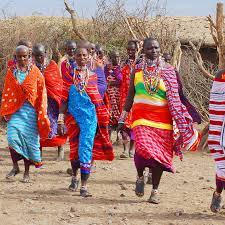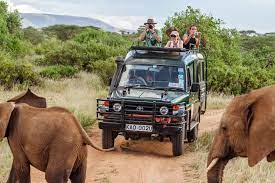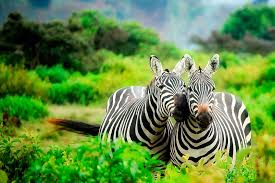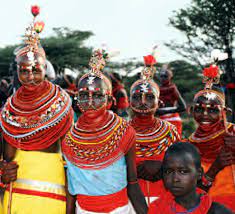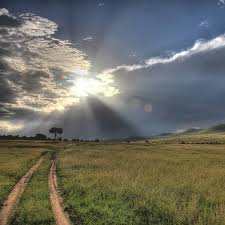Overview
The open horizons and abundant wildlife of the Mkata Floodplain, the popular centerpiece of Mikumi, is often compared to the more famous Serengeti Plains. At the end of the Dry season the waterholes, including the hippo pool, become a wildlife magnet and huge herds of elephant and buffalo visit these spots throughout the day. The park is very accessible by surfaced road from Dar es Salaam.
Best Time to Visit
Wildlife viewing in Mikumi is fine throughout the year, but the best time is from late June to October (the Dry season). At this time vegetation is thinner, and animals gather around predictable water sources. The end of the Dry season (September and October) is a particularly rewarding time for wildlife viewing as big herds of animals come to drink at the waterholes. However, at this time many vehicles can be lined up at the busy hippo pool.
Best Time June to October (Animals are attracted to the waterholes)
High Season June to October (Mikumi doesn’t usually have crowds at any time)
Low Season April and May (Low season discounts might apply)
Best Weather June to October (Little to no rainfall)
Worst Weather March and April (Peak of Wet season)
June to October –Dry Season
- Wildlife is easier to spot as vegetation thins out, and animals concentrate around waterholes and rivers
- Abundant sunshine and little rainfall
- The risk of catching malaria is less as there are not as many mosquitoes
- There is not as much humidity, so the heat seems less severe
- There is a lot of dust in the air because it is very dry
The Dry season, from June to October, is the best time for wildlife viewing in the park. Wildlife is easier to spot because vegetation is thinner and animals gather around predictable water sources such as the Mkata River, the hippo pool and other waterholes. At the end of the Dry season, during September and October, these waterholes are almost constantly visited by big herds of buffalo and elephant as well as other wildlife.
More than 400 bird species have been recorded, with such colorful common residents as the lilac-breasted roller, yellow-throated longclaw and bateleur eagle, joined by a host of European migratory birds from November to April. The hippo pool and Mwanambogo dam are a good place to see some of the water-associated birds like African fish eagle, African spoonbill and hamerkop, and the Mkata river offers great views of African openbills fishing.
Birding Specials –Treats for Avid Birders
- African hawk eagle
- African grey hornbill
- African openbill
- Cardinal woodpecker
- Green wood-hoopoe
- Long-tailed fiscal
- Malachite kingfisher
- Mariqua sunbird
- Northern carmine bee-eater
- Northern pied babbler
- Pale batis
- Pale-billed hornbill
- Red-billed oxpecker
- Shelley’s sunbird
- Southern ground hornbill
- Purple-crested turaco
- Yellow-throated longclaw
Best Time for Bird Watching
Birdlife is good throughout the whole year, but at its best from November through April. At this time, resident birds are in breeding plumage, and migratory birds from north Africa and Europe can be found. Wildlife viewing is best during the Dry season (June to October)
Getting There
Safaris to Mikumi usually start from Dar es Salaam, and your point of entry for the country is Julius Nyerere International Airport (DAR). In most cases, your tour operator will pick you up from the airport and handle all further ground operations or domestic flights. Mikumi is about a four-hour drive away from Dar es Salaam and can easily be visited in solitude, especially as a weekend get-away. However, most people will visit Mikumi by safari vehicle en route to some of the more popular parks in southern Tanzania such as Selous or Ruaha. The only scheduled flights to Mikumi are with Safari Air Link which offers a daily connection to Ruaha, Selous and Dar es Salaam.
If driving from Ruaha, the distance is about 320km/200mi, and the drive takes roughly five hours.
Airlines & Ticket Prices
Please check Skyscanner, or for multiple-destination flights check Expedia, to see which airlines can take you to Julius Nyerere International Airport (DAR), and what tickets would cost.
Activities
Zebra, wildebeest, impala and buffalo can be found on the grassy plains. Lion, which prey on these animals, share the same area and can occasionally be spotted. Giraffe browse leaves from the isolated acacia trees that fringe the Mkata River. The small islands of shade provided by these acacias are also favored by elephant.
- Elephant(Common)
- Giraffe(Occasional)
- Hippo(Occasional)
- Buffalo(Common)
- Zebra(Common)
- Wildebeest(Common)
- White Rhino(None)
- Black Rhino(None)
- Lion (Occasional)
- Leopard(Rare)
- Cheetah(None)
- Hyena(Rare)
- Wild Dog(Rare)
Wildlife Highlights
Mikumi is one of the most reliable places in Tanzania for sightings of the powerful eland, the world’s largest antelope. The equally impressive greater kudu and sable antelope can be found in the miombo woodland-covered foothills of the mountains that rise from the park’s borders. The Lichtenstein’s hartebeest is one of the more unusual antelopes and has a slightly different appearance to the Coke’s hartebeest, which can be found in the northern parks of Tanzania.
Uniqueness
The landscape of Mikumi is often compared to that of the Serengeti. The road that crosses the park divides it into two areas with partially distinct environments. The area north-west is characterized by the alluvial plain of the river basin Mkata. The vegetation of this area consists of savannah dotted with acacia, baobab, tamarinds, and some rare palm. In this area, at the furthest from the road, there are spectacular rock formations of the mountains Rubeho and Uluguru. The southeast part of the park is less rich in wildlife, and not very accessible.
The fauna includes many species characteristic of the African savannah. According to local guides at Mikumi, chances of seeing a lion who climbs a tree trunk is larger than in Manyara (famous for being one of the few places where the lions exhibit this behavior). The park contains a subspecies of giraffe that biologists consider the link between the Masai giraffe and the reticulated or Somali giraffe. Other animals in the park are elephants, zebras, impala, eland, kudu, black antelope, baboons, wildebeests and buffaloes. At about 5 km from the north of the park, there are two artificial pools inhabited by hippos. More than 400 different species of birds also inhabit the park.[2]


